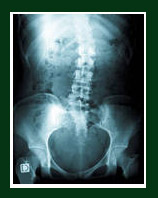 If pain continues after surgery it may mean that the diagnosed source for the pain was incorrect. In such cases it is appropriate to treat the muscles rather than the spine. There may continue to be involvement of the spinal nerves from the compression of the vertebrae, in which case relieving the tension around the vertebral joints will help.
If pain continues after surgery it may mean that the diagnosed source for the pain was incorrect. In such cases it is appropriate to treat the muscles rather than the spine. There may continue to be involvement of the spinal nerves from the compression of the vertebrae, in which case relieving the tension around the vertebral joints will help.
More likely, the pain is from the local sources where the muscles have become irritated and dysfunctional. Effects can be far-reaching, extending to numbness and loss of muscle function at the most distant part of the involved limb. Any symptomatic muscle along that nerve pathway must be treated for ischemia (local lack of oxygen from reduced blood flow), Trigger Points and nerve entrapment to alleviate the symptoms that persist after the surgical healing has been completed.
Neuromuscular Therapy treatment includes:
- Deep sustained pressure to release tight muscles and Trigger Points
- Deep gliding strokes to lengthen the muscle tissue and scar tissue and to “milk” out toxins that cause pain
- Flushing to increase the blood flow to speed healing and to take away acid wastes
- Active Isolated Stretching to increase muscle length, decrease the effects of scar tissue and keep blood coming to the tissue.
Homework includes a good program of stretching, a paced program of strengthening, and self-treatment of the muscles. Medical treatments included symptom control with medication and more intrusive treatments of local Trigger Points and of the nerves in the back and sacrum.